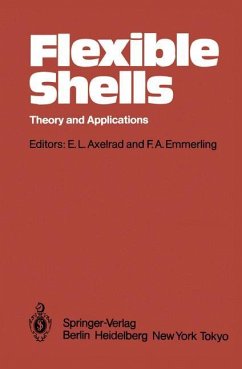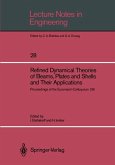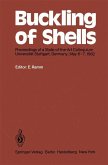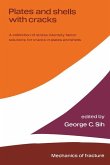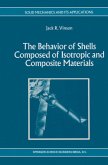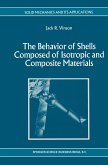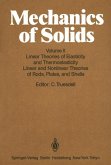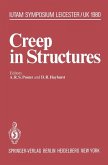Euromech-Colloquium Nr. 165 The shell-theory development has changed its emphasis during the last two decades. Nonlinear problems have become its main motive. But the analysis was until recently predominantly devoted to shells designed for strength and stiffness. Nonlinearity is here relevant to buckling, to intensively vary able stress states. These are (with exception of some limit cases) covered by the quasi-shallow shell theory. The emphasis of the nonlinear analysis begins to shift further - to shells which are designed for and actually capable of large elastic displacements. These shells, used in industry for over a century, have been recently termedj1exible shells. The European Mechanics Colloquium 165. was concerned with the theory of elastic shells in connection with its applications to these shells. The Colloquium was intended to discuss: 1. The formulations of the nonlinear shell theory, different in the generality of kine matic hypothesis, and in the choice of dependent variables. 2. The specialization of the shell theory for the class of shells and the respective elastic stress states assuring flexibility. 3. Possibilities to deal with the complications of the buckling analysis of flexible shells, caused by the precritial perturbations of their shape and stress state. 4. Methods of solution appropriate for the nonlinear flexible-shell problems. 5. Applications of the theory. There were 71 participants the sessions were presided over (in that order) by E. Reissner, J. G. Simmonds, W. T. Koiter, R. C. Tennyson, F. A. Emmerling, E. Rarnm, E. L. Axelrad.
Hinweis: Dieser Artikel kann nur an eine deutsche Lieferadresse ausgeliefert werden.
Hinweis: Dieser Artikel kann nur an eine deutsche Lieferadresse ausgeliefert werden.

